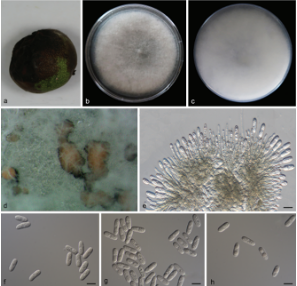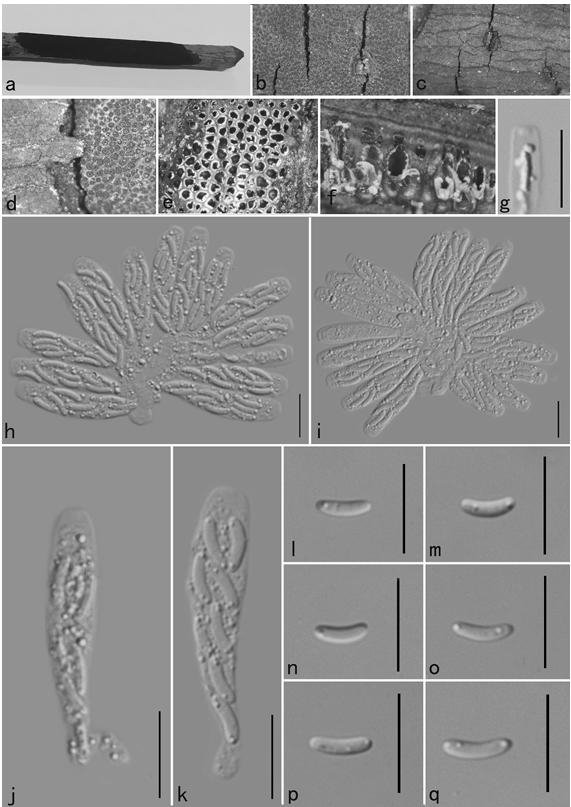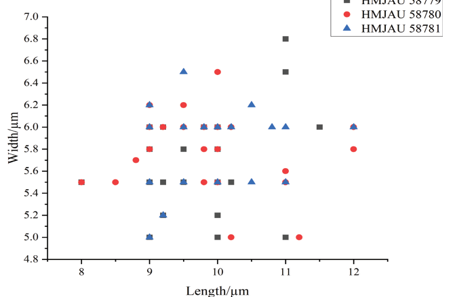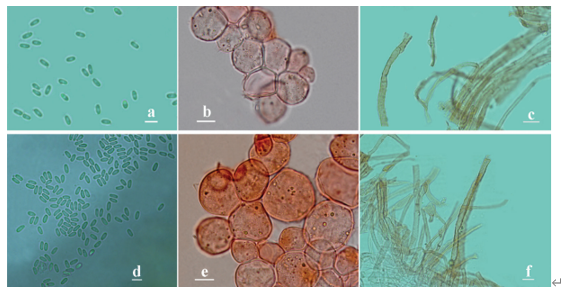Mendogia yunnanensis H.B. Jiang, Phookamsak & K.D. Hyde 2020
Index Fungorum number: IF556320; Facesoffungi number: FoF 06008
Holotype: CHINA, Yunnan, Xishuangbanna (22°7′50″N, 100°39′51″E), on living culms of bamboo, 21 November 2015, R. Phookamsak, XB004 (MFLU 19–0006, holotype).
Morphological description
Obligate epiphytic on living bamboo culms. Sexual morph: Ascostromata 1.5–4.5 mm diam., 135–175 μm high, scattered, solitary to gregarious, superficial, easily removed from the host surface, opaque black, flattened, slightly raised, rounded or ellipsoidal, rugulose on surface of ascostroma, sunken near the edge, multi-loculate, inconspicuous loculate with each ascus forming in a locule, glabrous. Peridium:thickwalled, composed of two type cells, outer layer 20–30 μm thick, thin-walled, composed of black, carbonaceous cells, easily broken and cracked, inner layer 150–240 μm thick, thick at the base towards the sides and apex, composed of hyaline to brown, pseudoparenchymatous cells of textura angularis. Asci arranged in type I, 55–75 × 25–30 μm (̅x = 65 × 27.5 μm, n = 20), 6-spored, bitunicate, ovoid to clavate, apically rounded. Ascospores 19–23 × 8.5–10.5 μm (̅x = 21 × 9.5 μm, n = 20), partially overlapping, 2-seriate or irregularly arranged, hyaline, muriform, varied in shape, frequently ellipsoidal to ovoid, with rounded ends, with 3–5 transverse septa and 2–3 longitudinal septa, constricted at the septa, narrow at both end cells, occasionally narrow at basal cell, surrounded by a thin mucilaginous sheath which is prominent at the end cells. Asexual morph: Undetermined.
Habitat: On living culms of bamboo.
Distribution: In China.
GenBank Accession: LSU: MK433593; SSU: MK433601
Notes: Mendogia yunnanensis is similar to M. chiangraiensis based on size of ascostromata and ascospores surrounded by a mucilaginous sheath (see Table 2). Asci and ascospores of M. yunnanensis are smaller than M. chiangraiensis, while M. yunnanensis has 6-spored asci with an inconspicuous ocular chamber. Phylogenetic analyses based on a combined ITS, LSU, SSU, and TEF1-αsequenced dataset (Fig. 1) also showed that M. yunnanensis is distinct from M. macrostroma and M. chiangraiensis. Therefore, M. yunnanensis is introduced as a new species.
Reference: Hong-Bo Jiang1,2,3,4,5 & Rungtiwa Phookamsak1,2,4,5 & Jianchu Xu2,4,5,6 et al.
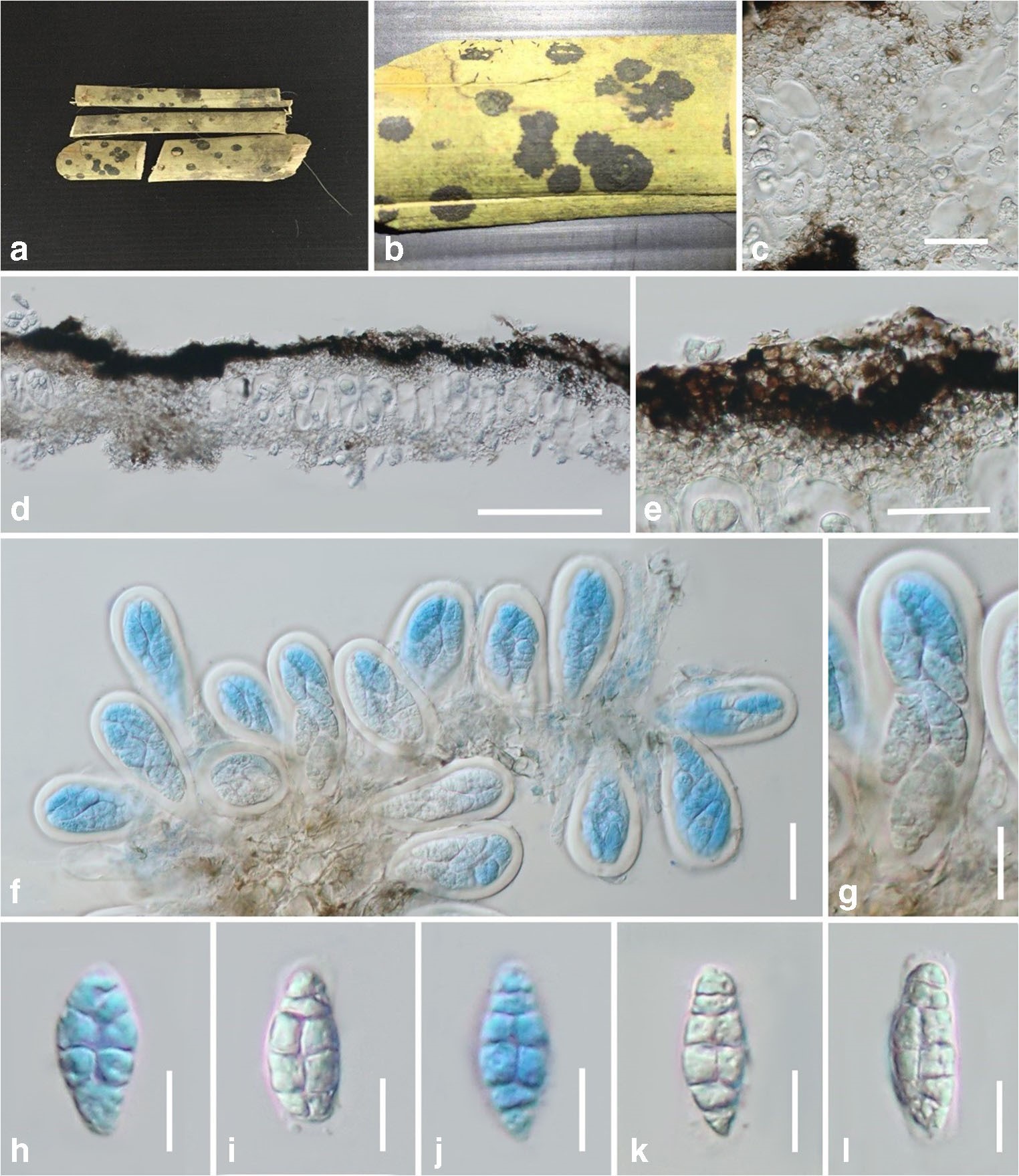
Mendogia yunnanensis (MFLU 19–0006, holotype). a, b Ascostromata on bamboo host. c Cells between asci through horizontal section. d Section through ascostroma showing locules, with one ascus in each locule. e Peridium at the apex of ascostroma. f, g Asci stained by cotton blue. h–l Ascospores (h, j = stained by cotton blue). Scale bars: c =50 μm, d = 150 μm, e = 40 μm, f = 30 μm, g = 15


